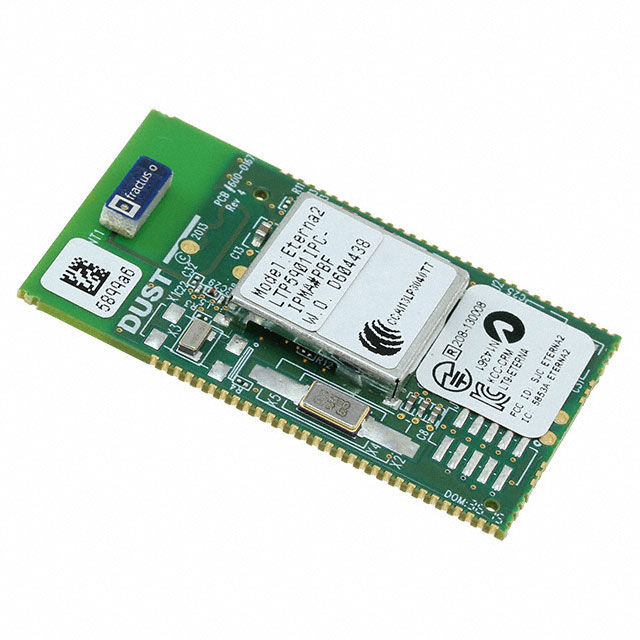What Are Reed Switches and Why Are They Essential in Modern Electronics?
- joddiemarshall6
- Jul 24
- 4 min read
Introduction to Reed Switches
Reed switches are compact, magnetically activated components that play a critical role in a wide range of electrical and electronic applications. Built with two ferromagnetic blades hermetically sealed inside a glass tube, these switches open or close their contact in response to a magnetic field. Despite their simplicity, reed switches are invaluable due to their reliability, low power consumption, and versatility. From automotive sensors to security systems and consumer electronics, their use continues to grow across industries.
This comprehensive guide explores how reed switches work, their types, advantages, and typical applications—designed to be both informative and SEO-friendly for readers and search engines alike.
How Do Reed Switches Work?
Reed switches operate through magnetic actuation. When a magnetic field is brought near the switch, the two ferromagnetic reeds inside the sealed glass envelope attract and close (or open) the circuit, depending on the switch configuration.
A normally open reed switch remains open until a magnetic field closes the contact.
A normally closed reed switch remains closed and opens when exposed to a magnetic field.
A changeover (SPDT) reed switch includes both normally open and normally closed contacts that toggle between states.
This simple mechanism ensures a clean, contactless switching process, ideal for environments where mechanical wear and tear could compromise reliability.
What Are the Main Types of Reed Switches?
Understanding the types of reed switches available helps in choosing the right one for your application:
Usually Open (NO): Default open state; closes with magnetic presence.
Normally Closed (NC): Default closed state; opens with magnetic presence.
Form C (Changeover/SPDT): Switches between two circuits; one opens while the other closes.
Each type offers unique characteristics for specific use cases, providing flexibility in system design and implementation.
Why Use Reed Switches Instead of Traditional Switches?
Reed switches are preferred in many scenarios over traditional mechanical switches due to their distinct advantages:
No physical contact: They operate using magnetic fields, resulting in reduced wear and longer life.
Dust and moisture resistance: Hermetically sealed in glass, making them ideal for harsh environments.
Low power requirement: Perfect for battery-operated or energy-efficient devices.
High sensitivity: Can detect low-intensity magnetic fields.
Compact size: Suitable for miniaturised and embedded systems.
These features make reed switches a preferred choice in industries requiring precision and long-lasting performance.
Where Are Reed Switches Commonly Used?
The versatility of reed switches allows them to be integrated across a wide range of sectors and applications:
Automotive Systems:
Door, seatbelt, and brake sensors
Gear position indicators
Consumer Electronics:
Flip phone and laptop lid sensors
Smartphone accessories (e.g., magnetic cases)
Home Security:
Window and door alarm systems
Intrusion detection sensors
Medical Devices:
MRI and diagnostic equipment
Position sensing in hospital beds
Industrial Automation:
Proximity sensors
Fluid level monitoring
Smart Home Applications:
Smart locks and garage doors
Home automation triggers via magnets.
These examples demonstrate how reed switches provide reliable and cost-effective solutions across various applications.
What Are the Key Benefits of Reed Switches?
Reed switches are packed with benefits that make them ideal for both simple and complex electrical systems:
Longevity and Durability: With minimal mechanical parts and sealed contacts, they often last for millions of cycles.
Low Contact Resistance: Ensures efficient signal transmission with minimal voltage drop.
Fast Response Time: Quickly switches states upon magnetic activation.
Compact Form Factor: Easily integrates into limited-space electronics.
Customizability: Available in different sensitivity ranges, contact types, and mounting styles.
Fail-Safe Operation: Can act as passive sensors that do not require external power to operate.
These advantages enhance the performance and efficiency of modern devices and systems.
How to Choose the Right Reed Switch?
Selecting the right reed switch depends on several technical factors based on your application needs:
Operating Voltage and Current: Match the switch’s electrical ratings to your system requirements.
Contact Type: Choose between NO, NC, or changeover configurations based on your switching logic.
Magnetic Sensitivity: Measured in ampere-turns (AT); higher sensitivity means it activates at a weaker magnetic field.
Mounting Style: Options include through-hole, surface-mount, and panel-mount for design flexibility.
Response Time: Important in applications requiring fast switching.
Environmental Conditions: Consider exposure to vibration, temperature extremes, or corrosive environments.
A thoughtful selection ensures optimal performance, reliability, and longevity.
What Materials and Construction Make Reed Switches So Reliable?
The core reliability of reed switches comes from their precise construction and quality materials:
Glass Tube: Offers insulation and protection from the environment.
Ferromagnetic Reeds: Typically made from nickel-iron for strong magnetic response and durability.
Contact Plating: Gold or rhodium coatings reduce resistance and prevent oxidation.
Hermetic Sealing: Protects internal elements from dust, moisture, and corrosive agents.
This robust design ensures dependable switching even in mission-critical applications.
Can Reed Switches Be Used in Wireless or IoT Devices?
Absolutely. Reed switches are increasingly integrated into innovative systems and Internet of Things (IoT) devices:
Wireless Door Sensors: Communicate magnetic state changes via Bluetooth or Wi-Fi.
Battery-Operated Devices: Their low power consumption makes them ideal for portable electronics.
Remote Monitoring Systems: Trigger signals when magnets are displaced, aiding real-time tracking.
Their adaptability makes them essential components in modern, connected environments.
Conclusion: Why Are Reed Switches Still Relevant in Today’s High-Tech World?
In an age dominated by digital sensors and complex electronic systems, reed switches stand out for their simplicity, durability, and affordability. Their ability to deliver contactless switching with high precision in a compact, sealed package continues to make them indispensable across industries.
Whether you're designing an IoT sensor, a vehicle monitoring system, or a home security solution, reed switches provide a dependable and cost-efficient switching mechanism. As electronic devices become smarter and smaller, these humble magnetic switches remain vital building blocks—quietly enabling safe and reliable operations every day.
Final Tip: When planning your next sensor-based application or magnetic control system, don’t overlook the power of the reed switch—simple in design, yet powerful in performance.



Comments